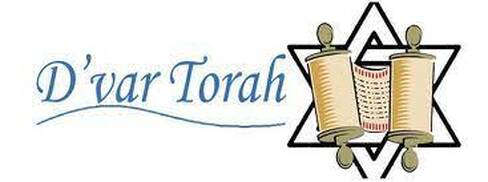|
Torah Reading Triennial Portion: Exodus, Chapter 37, verse 17 through Chapter 39, verse 21. Second Torah, Exodus, Chapter 12, verses 1-20. The Parshiyot we read this Shabbat are the final two of the book of Exodus, the second of the five books of the Torah. The subject matter is the construction of the Mishkan, the moveable sanctuary that our ancestors worshipped at during their sojourn in the Wilderness. I found the following D’Var that I wanted to share with you in part, written by Ilana Kurshan: . . . The act of translating vision into reality was not easy for Moshe. The midrash (Tanchuma Vayikra 11:8) plays on the term used in the Torah to describe the fashioning of the Menorah from gold – it had to be mikshah, made of hammered work. The word mikshah comes from the same root as kashah, which means hardness and difficulty. The Menorah posed a particular challenge to Moshe, perhaps because of the elaborate cups, calyxes, and petals adorning its branches. As the midrash relates, God therefore engraved the Menorah upon Moshe’s hand when Moshe was up on Sinai. Moshe was instructed to descend the mountain and then copy the image God had engraved on his hand so as to fashion the Menorah. Only after receiving an in-person tutorial from God on the mountain was Moshe able to come down and fashion the Menorah. “I said to them, Whoever has any gold, let them break it off. So they gave it me; then I cast it into the fire, and there came out this calf.” (Exodus 32:24)
We are told about the construction of the Menorah. It was cast out of a solid piece of gold by an artist who carried a God given vision. The menorah had seven branches with carefully carved petals and flowers along each branch. The carving of the menorah can be likened to Michelangelo’s carving of the statue of David. Michelangelo shared how he looked at the solid piece of marble and chiseled away everything that was not David. In the same way, Bezalel looked at the gold and cut away everything that was not the menorah. But this week we have a very different image. The Israelites, led by Moses’ brother Aaron, built a Golden Calf. Moses confronts his brother, asking how this could happen. Aaron says that he collected the gold from the people. He hoped that the people would hold on to their valuable gold, thus avoiding the building of an idol. But the people willingly gave Aaron their gold. Aaron claims that he threw the gold into the fire, and the Golden Calf simply emerged on its own. Rashi writes that Aaron cast it into the fire not knowing that this calf would come out. It just happened. The Golden Calf just happened. There was no will, no vision, and no skill behind it. It was pure happenstance. Aaron did not mean for it to happen. It was out of his control. It is as if the calf created itself. If an event happens by chance, on its own, then nobody is to blame. And one of the fascinating facts of this story is that Aaron is not blamed and not punished. It was an event beyond his control. There is an important insight here. When something good happens like a work of art, we are willing to give full credit to the artist. When something bad happens like a Golden Calf, nobody is to blame. It just happens. How often do we take credit for the good things we do but take no responsibility for the bad things we do? How often do we say, “it just happened?” We were caught up in events beyond our control. Our genes made us do it. Or our upbringing made us do it. We are victims. “The devil made me do it.” It is not a sin but an illness. It just happened. I often think of a Midrash about the world’s first murderer Cain, who slew his brother Abel. God asks Cain, where is your brother, and Abel answers, “Am I my brother’s keeper?” The Midrash compares it to a thief who runs into the night watchman after committing a robbery. The thief says, “I am a thief, I am simply doing my job. But you are a watchman. You should have done a better job guarding these items. You, the watchman, not me, the thief, are to blame.” In the same way Cain blames God. “You created me. You gave me my evil inclination. God, it is your fault that I killed my brother.” We live in an age where people avoid blame. Events just happen. But if we are to take credit for the good things we do, we need to accept blame for the bad things we do. If an artist made the menorah, then an artist also made the Golden Calf. Accepting blame is the first step towards true repentance. Aaron was unwilling to accept the blame. He said the Golden Calf just happened. Perhaps if he had accepted responsibility, the Golden Calf would not have become the worst sin of the Israelite’s sojourn through the wilderness. This Shabbat, we also read from a second Torah about the Red Heifer, the Parah Adumah. It gives the people of the Wilderness the means to achieve ritual purity. This is a reminder that Passover is approaching (as if we needed a reminder) and that we should begin to ready ourselves for it.
0 Comments
Leave a Reply. |
Archives
July 2024
Categories |
OFFICE HoursM-Th: 10am - 2pm
|
Telephone(781) 925-0091
|
|


 RSS Feed
RSS Feed